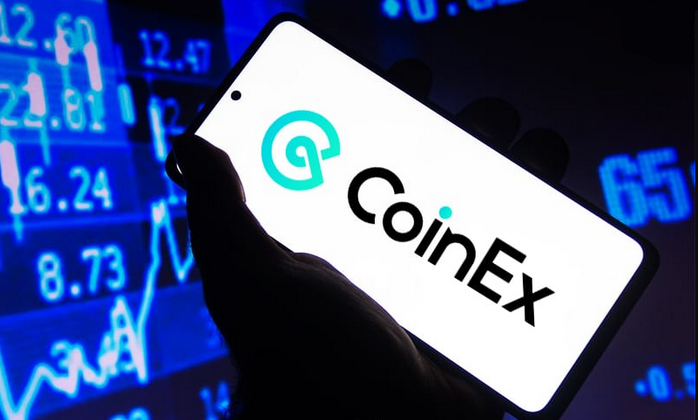-
 Bitcoin
Bitcoin $91,399.6094
4.86% -
 Ethereum
Ethereum $1,704.8681
8.06% -
 Tether USDt
Tether USDt $1.0005
0.05% -
 XRP
XRP $2.1564
3.60% -
 BNB
BNB $607.4562
1.91% -
 Solana
Solana $144.8137
6.06% -
 USDC
USDC $0.9998
0.00% -
 Dogecoin
Dogecoin $0.1730
8.98% -
 TRON
TRON $0.2448
-0.44% -
 Cardano
Cardano $0.6553
5.53% -
 Chainlink
Chainlink $13.8169
5.39% -
 Avalanche
Avalanche $21.6278
8.20% -
 UNUS SED LEO
UNUS SED LEO $9.0426
-1.05% -
 Stellar
Stellar $0.2602
3.01% -
 Sui
Sui $2.4591
11.77% -
 Shiba Inu
Shiba Inu $0.0...01330
7.32% -
 Toncoin
Toncoin $3.0077
3.87% -
 Hedera
Hedera $0.1768
4.48% -
 Bitcoin Cash
Bitcoin Cash $355.0080
3.50% -
 Litecoin
Litecoin $83.1356
6.40% -
 Hyperliquid
Hyperliquid $18.6550
4.13% -
 Polkadot
Polkadot $3.9039
2.01% -
 Dai
Dai $0.9999
0.01% -
 Bitget Token
Bitget Token $4.5079
1.72% -
 Ethena USDe
Ethena USDe $0.9996
0.03% -
 Pi
Pi $0.6406
0.99% -
 Monero
Monero $222.3341
3.54% -
 Pepe
Pepe $0.0...08496
8.99% -
 Uniswap
Uniswap $5.6500
7.25% -
 Aptos
Aptos $5.1191
2.52%
Where is the CoinEx usdt-based contract?
CoinEx's USDT-based contracts offer traders stability and flexibility, enabling them to leverage USDT as a settlement currency and choose from various markets with different underlying assets and leverage options.
Nov 30, 2024 at 02:38 pm

Exploring the CoinEx USDT-based Contract: A Detailed Guide
Introduction
CoinEx, a reputable cryptocurrency exchange established in 2017, offers a diverse range of trading options, including USDT-based contracts. These contracts enable traders to leverage the USDT stablecoin as a settlement currency, providing stability and flexibility in their trading strategies.
Navigating the CoinEx USDT-based Contract
1. Fund Your Account
Before accessing the USDT-based contract, you must first fund your CoinEx account with USDT. You can deposit USDT directly from an external wallet or purchase it through CoinEx's integrated Fiat Gateway.
2. Activate Futures Trading
Once you have USDT in your account, you need to activate futures trading in your account settings. This process is simple and can be completed in a few clicks.
3. Access the USDT-based Contract Market
Navigate to the "Contracts" tab on the CoinEx website or app. Select the "USDT Contract" tab and explore the available markets. USDT-based contracts are denoted with "USDT" in their market name.
4. Choose Your Contract
Select the USDT-based contract you wish to trade. The available contracts vary in underlying asset and leverage options. Choose the one that best aligns with your trading strategy.
5. Place Your Order
Once you have selected your contract, you can place your order. USDT-based contracts offer two order types: Limit Orders and Market Orders. Limit Orders allow you to specify a specific price at which your order will be executed, while Market Orders will be executed immediately at the best available market price.
6. Manage Your Position
After placing your order, you can monitor your open positions in the "Positions" section of the Contracts tab. You can adjust your position by adding to it or closing it partially or completely.
7. Fund Management
USDT-based contracts require sufficient collateral to maintain your positions. You can check your account balance and collateral levels in the "Account Balance" section. If your collateral falls below the required maintenance margin, you will receive a margin call and may be required to increase your position or face liquidation.
8. Withdraw Your Profits
Once you have closed your position and realized your profits, you can withdraw your USDT from CoinEx. The withdrawal process is typically completed within a few minutes, depending on the network congestion.
Disclaimer:info@kdj.com
The information provided is not trading advice. kdj.com does not assume any responsibility for any investments made based on the information provided in this article. Cryptocurrencies are highly volatile and it is highly recommended that you invest with caution after thorough research!
If you believe that the content used on this website infringes your copyright, please contact us immediately (info@kdj.com) and we will delete it promptly.
- Pi Network's native cryptocurrency, PI, is gaining traction once more after a significant price drop.
- 2025-04-23 05:05:12
- Unicoin Has Rebuffed the U.S. Securities and Exchange Commission's (SEC) Attempt to Negotiate a Settlement Agreement
- 2025-04-23 05:05:12
- Mantra (OM) Founder and CEO Mullin Announces Plan to Burn His Personal Allocation of 150 Million OM Tokens
- 2025-04-23 05:00:12
- Autonomous AI Agents Could Create Their Own Crypto-Monetary Hegemony
- 2025-04-23 05:00:12
- What Happened to Shares of Coinbase (COIN) Jumped 10.3%?
- 2025-04-23 04:55:12
- Best sweeps casino mobile apps + promo codes for new users
- 2025-04-23 04:55:12
Related knowledge

How does Tail Protection reduce the loss of liquidation?
Apr 11,2025 at 01:50am
Introduction to Tail Protection in CryptocurrencyTail Protection is a mechanism designed to mitigate the risks associated with liquidation in cryptocurrency trading. Liquidation occurs when a trader's position is forcibly closed by the exchange due to insufficient margin to cover potential losses. This often happens in leveraged trading, where traders b...

What are the consequences of an imbalance in the long-short ratio?
Apr 13,2025 at 02:50pm
The long-short ratio is a critical metric in the cryptocurrency trading world, reflecting the balance between bullish and bearish sentiments among traders. An imbalance in this ratio can have significant consequences on the market dynamics, affecting everything from price volatility to trading strategies. Understanding these consequences is essential fo...

How to judge the market trend by the position volume?
Apr 11,2025 at 02:29pm
Understanding how to judge the market trend by position volume is crucial for any cryptocurrency trader. Position volume, which refers to the total number of open positions in a particular cryptocurrency, can provide valuable insights into market sentiment and potential price movements. By analyzing this data, traders can make more informed decisions ab...

Why does a perpetual contract have no expiration date?
Apr 09,2025 at 08:43pm
Perpetual contracts, also known as perpetual futures or perpetual swaps, are a type of derivative product that has gained significant popularity in the cryptocurrency market. Unlike traditional futures contracts, which have a fixed expiration date, perpetual contracts do not expire. This unique feature raises the question: why does a perpetual contract ...

Why is the full-position mode riskier than the position-by-position mode?
Apr 13,2025 at 03:42pm
Why is the Full-Position Mode Riskier Than the Position-by-Position Mode? In the world of cryptocurrency trading, the choice between full-position mode and position-by-position mode can significantly impact the risk profile of a trader's portfolio. Understanding the differences between these two modes is crucial for making informed trading decisions. Th...

How is the liquidation price calculated?
Apr 12,2025 at 01:35am
Introduction to Liquidation PriceLiquidation price is a critical concept in the world of cryptocurrency trading, particularly when dealing with leveraged positions. Understanding how this price is calculated is essential for traders to manage their risk effectively. The liquidation price is the point at which a trader's position is forcibly closed by th...

How does Tail Protection reduce the loss of liquidation?
Apr 11,2025 at 01:50am
Introduction to Tail Protection in CryptocurrencyTail Protection is a mechanism designed to mitigate the risks associated with liquidation in cryptocurrency trading. Liquidation occurs when a trader's position is forcibly closed by the exchange due to insufficient margin to cover potential losses. This often happens in leveraged trading, where traders b...

What are the consequences of an imbalance in the long-short ratio?
Apr 13,2025 at 02:50pm
The long-short ratio is a critical metric in the cryptocurrency trading world, reflecting the balance between bullish and bearish sentiments among traders. An imbalance in this ratio can have significant consequences on the market dynamics, affecting everything from price volatility to trading strategies. Understanding these consequences is essential fo...

How to judge the market trend by the position volume?
Apr 11,2025 at 02:29pm
Understanding how to judge the market trend by position volume is crucial for any cryptocurrency trader. Position volume, which refers to the total number of open positions in a particular cryptocurrency, can provide valuable insights into market sentiment and potential price movements. By analyzing this data, traders can make more informed decisions ab...

Why does a perpetual contract have no expiration date?
Apr 09,2025 at 08:43pm
Perpetual contracts, also known as perpetual futures or perpetual swaps, are a type of derivative product that has gained significant popularity in the cryptocurrency market. Unlike traditional futures contracts, which have a fixed expiration date, perpetual contracts do not expire. This unique feature raises the question: why does a perpetual contract ...

Why is the full-position mode riskier than the position-by-position mode?
Apr 13,2025 at 03:42pm
Why is the Full-Position Mode Riskier Than the Position-by-Position Mode? In the world of cryptocurrency trading, the choice between full-position mode and position-by-position mode can significantly impact the risk profile of a trader's portfolio. Understanding the differences between these two modes is crucial for making informed trading decisions. Th...

How is the liquidation price calculated?
Apr 12,2025 at 01:35am
Introduction to Liquidation PriceLiquidation price is a critical concept in the world of cryptocurrency trading, particularly when dealing with leveraged positions. Understanding how this price is calculated is essential for traders to manage their risk effectively. The liquidation price is the point at which a trader's position is forcibly closed by th...
See all articles























































































